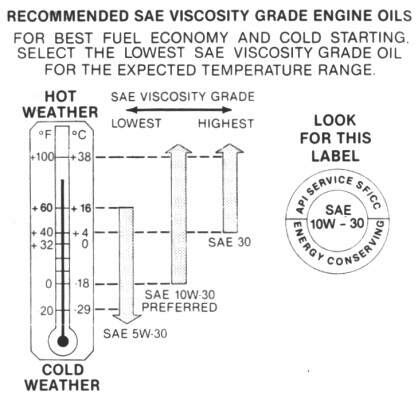One of the most overlooked, and yet most important services for a
vehicle, is replacing the engine oil and filter. When I worked as a service
manager, I was constantly amazed at the folks who would not spend the $15-$30 for this
service on a regular basis and then get nailed for an engine repair that would cost
between $1,500-$5,000 dollars.
HOW OFTEN?
In every area of the United States, the average interval between service
should be 3,000 to 3,750 miles. I recommend 3,750 because it is easier to track and there
are other services that can be combined. I know manufacturers suggest that a vehicle can
go as long as 7,500 miles between these services in what is termed as "normal" driving
conditions, but you are inviting trouble out of warranty. In America, it is always safer
to follow the "severe maintenance" schedule, also may be termed "schedule
B". One of the reasons for the choices of maintenance schedules is to help lower the cost of ownership, yet don't cut corners with the oil and filter service.
WHY SO OFTEN? VISCOSITY BREAKDOWN!
Viscosity is defined as resistance to flow. It is the ability of the oil to stick to a metal surface, especially when the engine is turned off. Viscosity breakdown is when the oil gets so dirty, thin or sludged up, that it can't cling to metal surfaces anymore when the engine is not running or when it is hot. Oddly enough, oil does not wear out, it just gets dirty and loses its ability to stick to the metal components of the engine. This is probably the main reason oil needs to be changed at regular intervals.
The worst wear on an engine is when it is first started. As oil loses its ability to stick to engine metal surfaces and drains to the oil pan when the engine is shut
off, when restarted, it can take several seconds or more for the oil
to be sent back up through the engine, especially to the top part of the engine which farthest
from the pan. Over a period of time, severe damage can be done, and it is
multiplied every time the engine is started with the old, dirty oil.
Another critical problem is that oil removes heat from the engine. If
the oil is thin or dirty, the heat buildup starts gluing the old, dirty oil to parts of
the engine creating what is called sludge. This sludge blocks the movement of the oil
through the engine. It clogs up the oil flow channels which can be as small as a sewing
needle, causing further problems, until the wear is so bad that the engine, whole or part,
fails.
Viscosity is rated at 0° F, represented by the number preceding the "W" [for Winter]) and at 212° F (represented by the second number in the viscosity designation). Motor oil thins as it heats and thickens as it cools. So, with the right additives to help it resist thinning too much, an oil can be rated for one viscosity when cold, another when hot. The more resistant it is to thinning, the higher the second number. Within reason, thicker oil generally seals better and maintains a better film of lubrication between moving parts.
At the low-temperature end, oil has to be resistant to thickening so that it flows more easily to all the moving parts in your engine. Also, if the oil is too thick the engine requires more energy to turn the crankshaft. Excessive thickness can make it harder to start the engine, which reduces fuel economy. A 5W oil is typically what's recommended for winter use. However, synthetic oils can be formulated to flow even more easily when cold, so they are able to pass tests that meet the 0W rating.
WHAT GRADE OF OIL?
Most oil on the market and used by service centers is fine for the
average automobile. The only exception would be if the vehicle has a high performance
engine or is a truck being used for towing or other heavy duty service. The vehicle owner’s manual should be
consulted for the proper oil for your vehicle. If you do not have an owner’s manual, a good rule of thumb is to use a 5w-30 rated oil in colder climates and 10w-40 rated oil for warmer areas. Here
is a standard Oil Grade Chart:

SYNTHETIC OIL IS THE BEST!
Synthetic oil is excellent for your vehicle. In fact, I was not big on synthetic oil
until I took a tour of an American Airlines service facility in Tulsa, OK, where my
friend, Allen Thurman, worked. I learned that synthetic oil was developed for jet engines back in the late 30s
because regular petroleum based oil would only last about 20 minutes in a jet engine. Well,
for one who flies a lot, that sounded like a good idea since it takes 20 minutes just to taxi to the runway for takeoff.
The real benefit of synthetic oil is its resistance to heat and viscosity breakdown. Synthetic oil does not need to be changed as often, usually every 12,000-15,000 miles or once a year. However, the filter, which should be one specially designed for synthetic oil, should be changed every 6,000-7,500 miles, just be sure to refill the oil lost when changing the filter. You can view the following links to learn more about synthetic oil.
Synthetic Oil Links
WHAT TYPE OF OIL FILTER?
Oil filters should be replaced everytime the oil is changed. Using the manufacturer’s oil filter is the safest, but usually the
most expensive. Most manufacturer’s oil filters are made by regular oil filter
companies to the manufacturer’s specifications. If you prefer to use a
non-manufacturer oil filter, make sure it has an anti-drain back valve. The purpose of this
valve is to retain oil in the filter for quick dispersion to upper engine, the part
furthest from the oil pan. This is really critical if you go longer than 4,000 miles
between oil changes. Also, if you choose synthetic oil, use a synthetic oil filter designed to filter.
This simple, inexpensive service is most important service for the most important component of your vehicle, the engine. The lack of this service is the number one reason engines fail. Imagine investing less than $100 per year to save thousands of dollars in repairs.
Copyright, 1997-2006, J. Daniel Emmanuel



